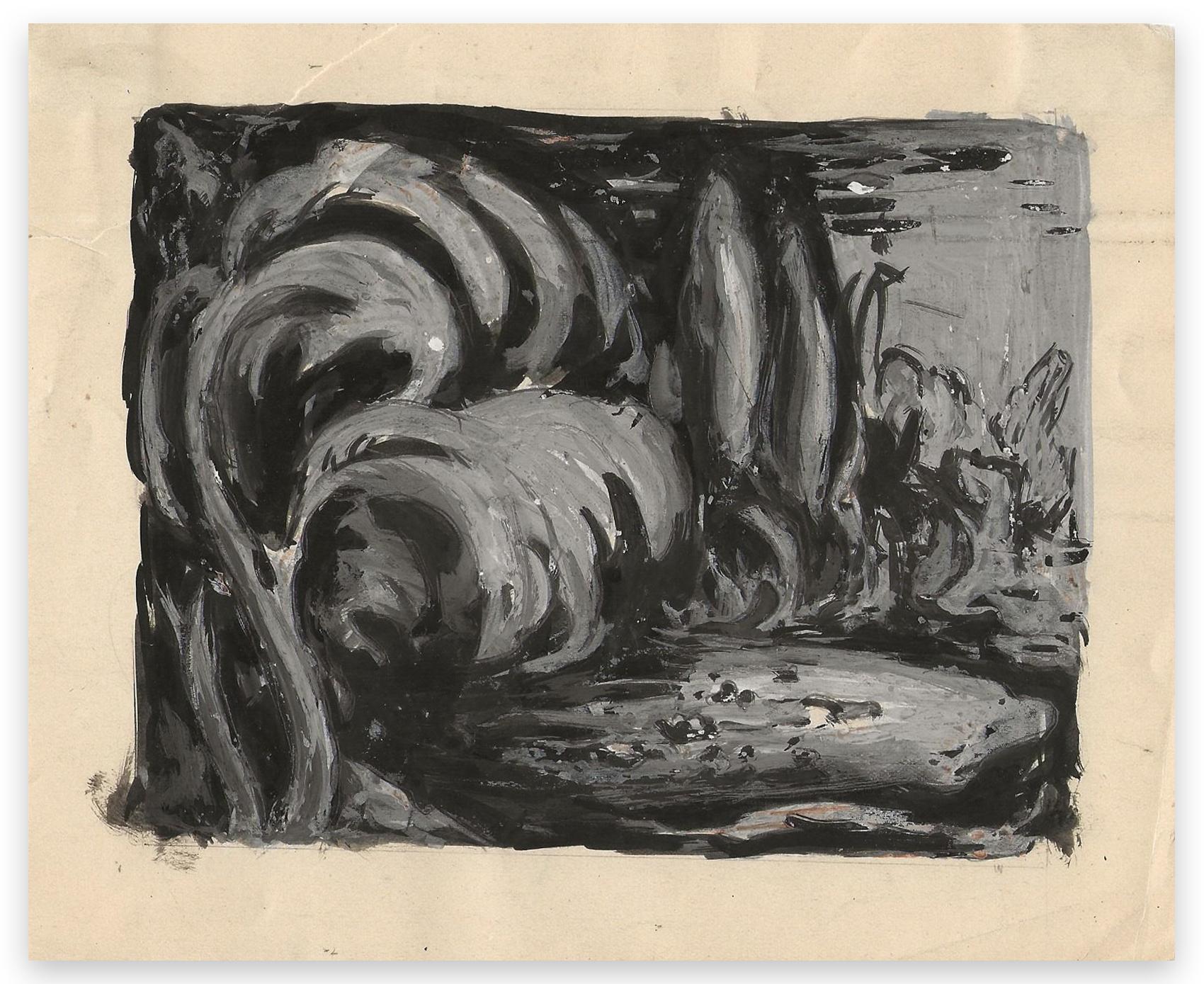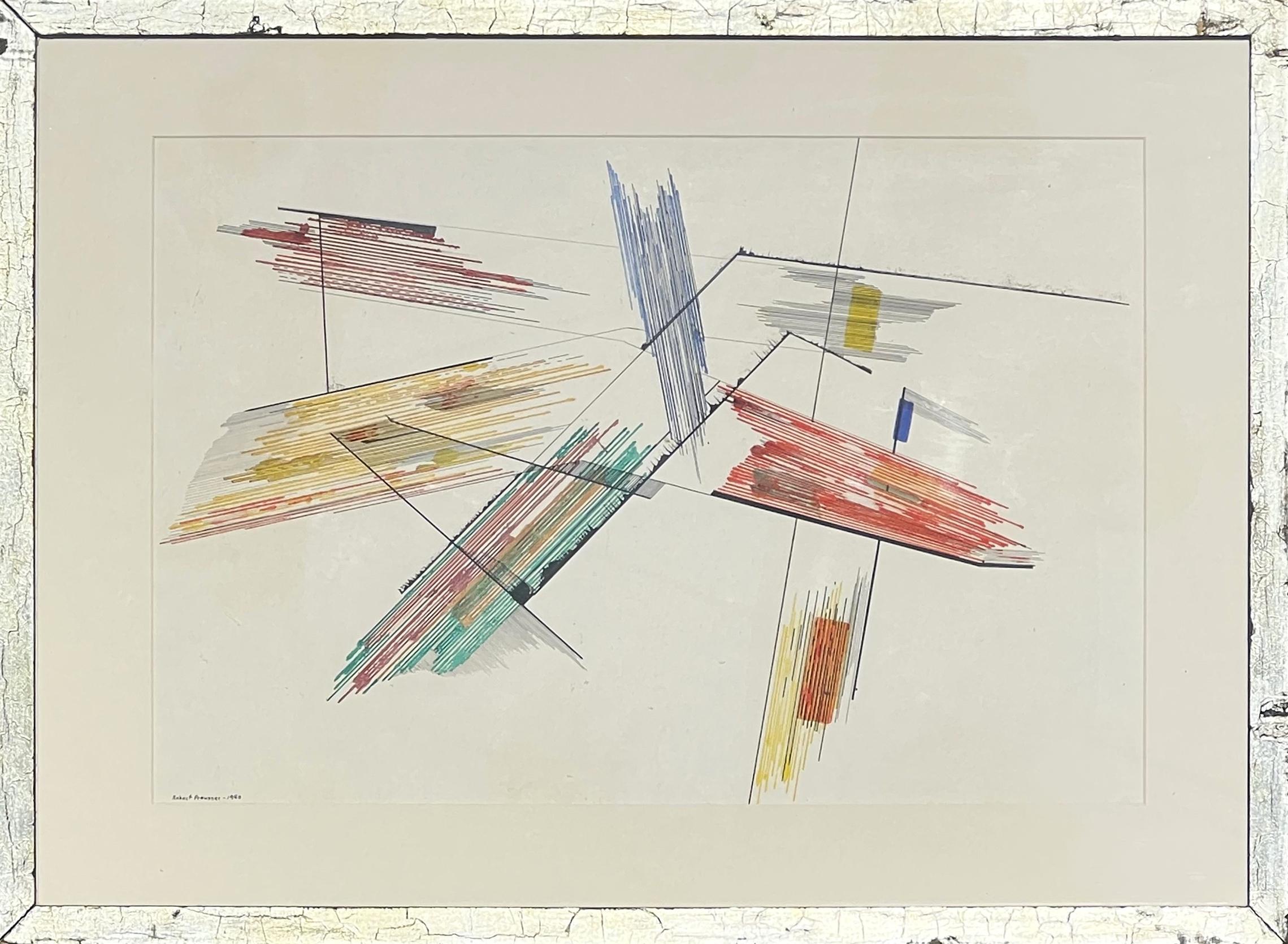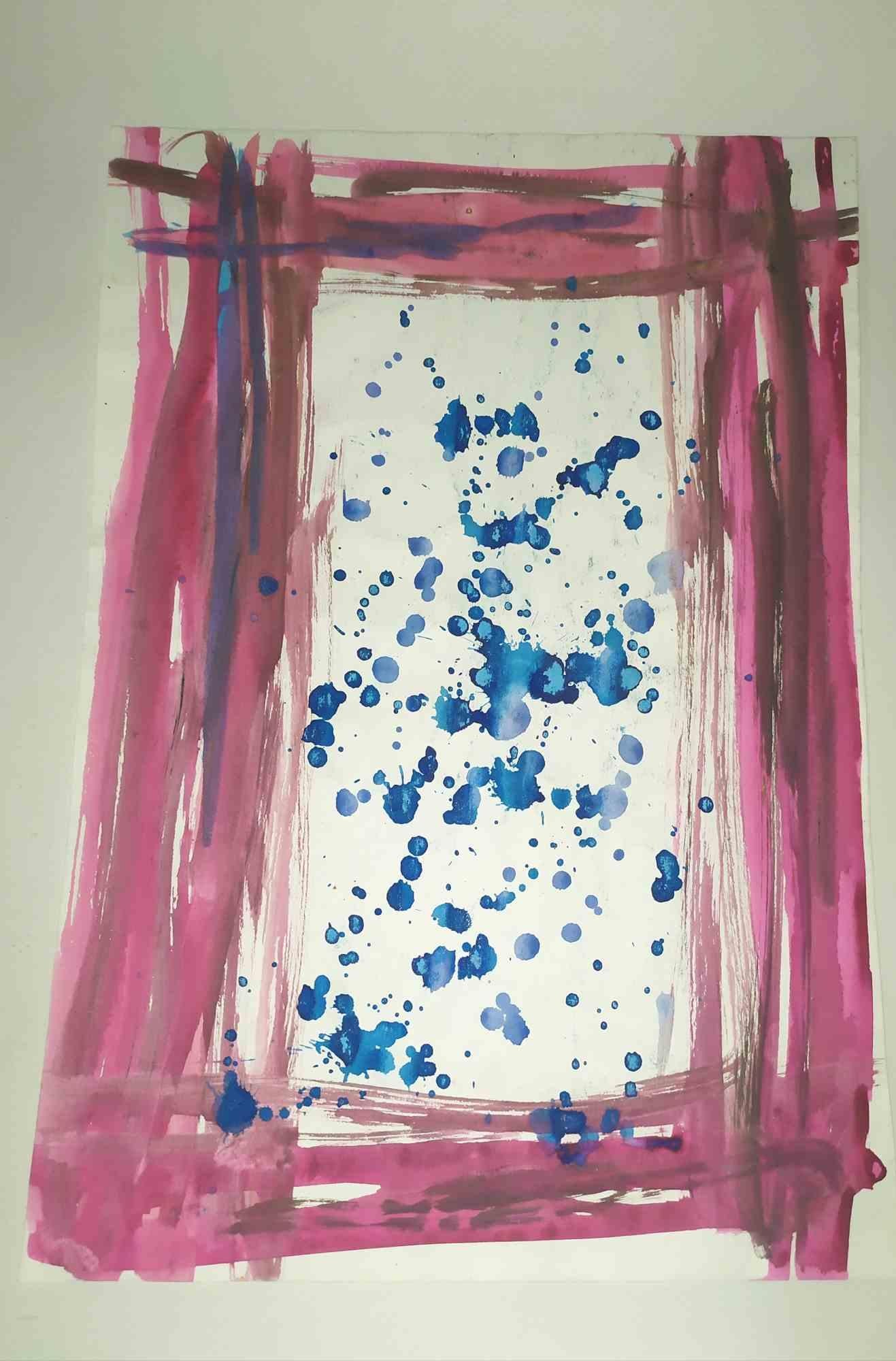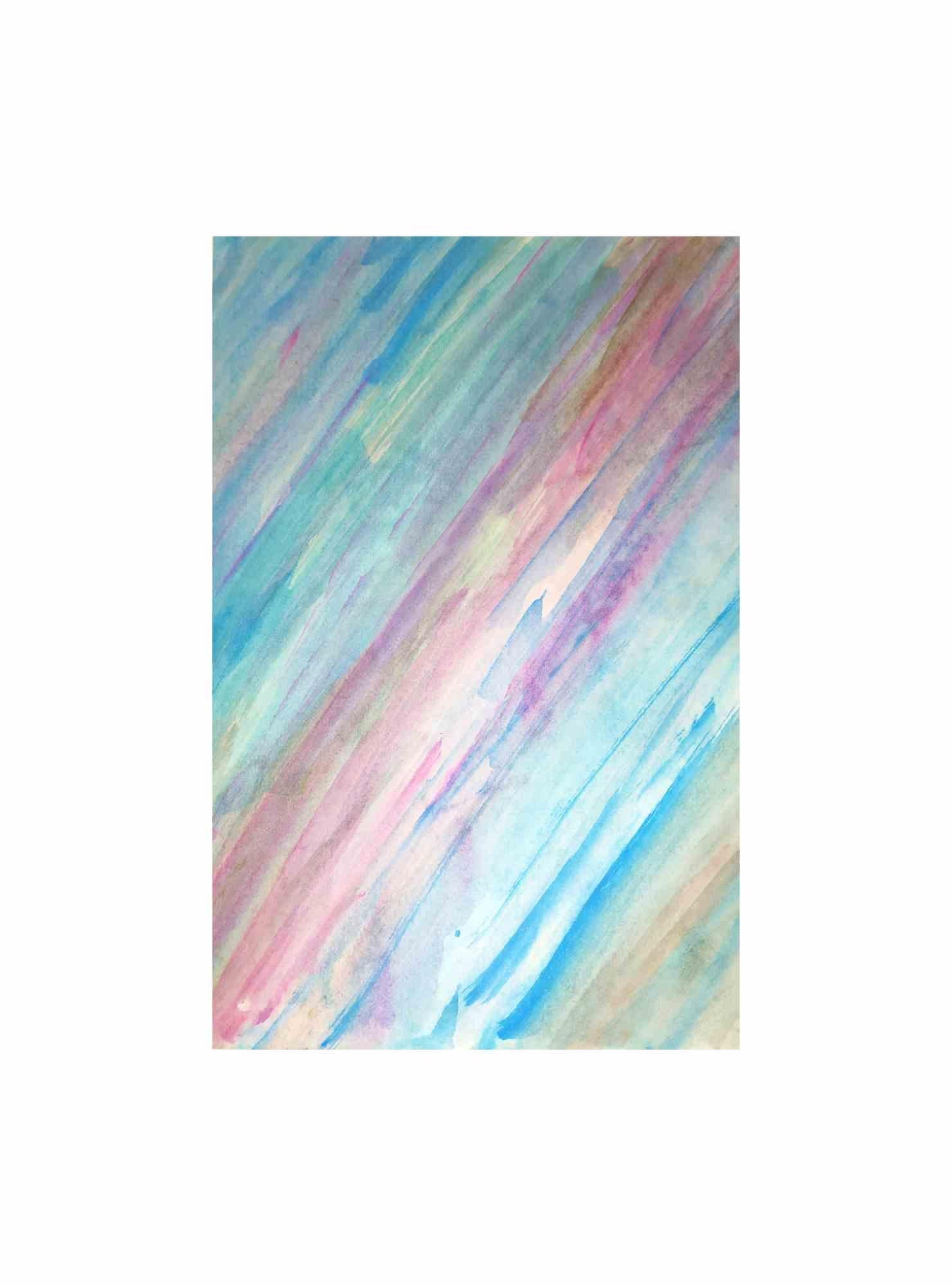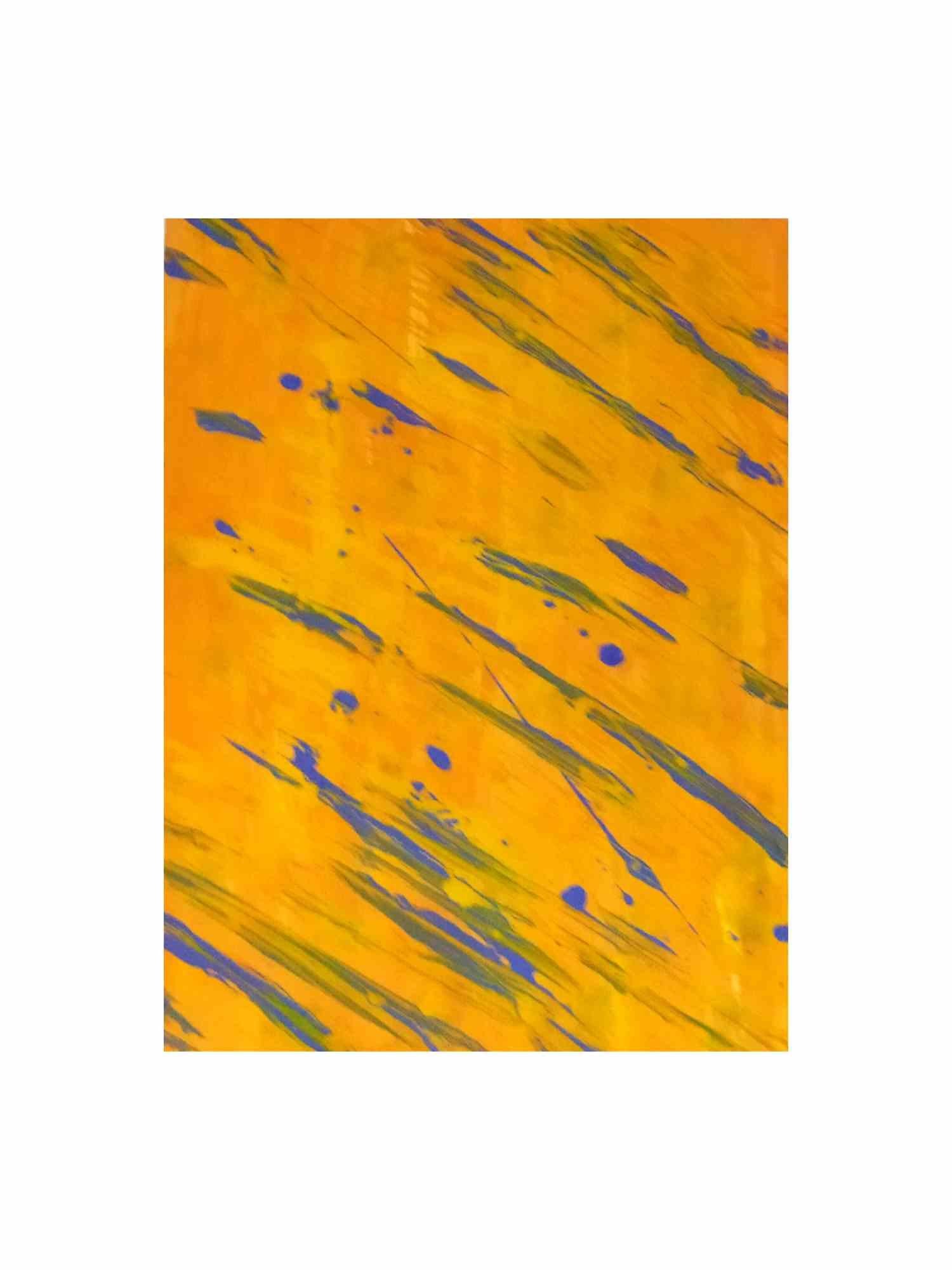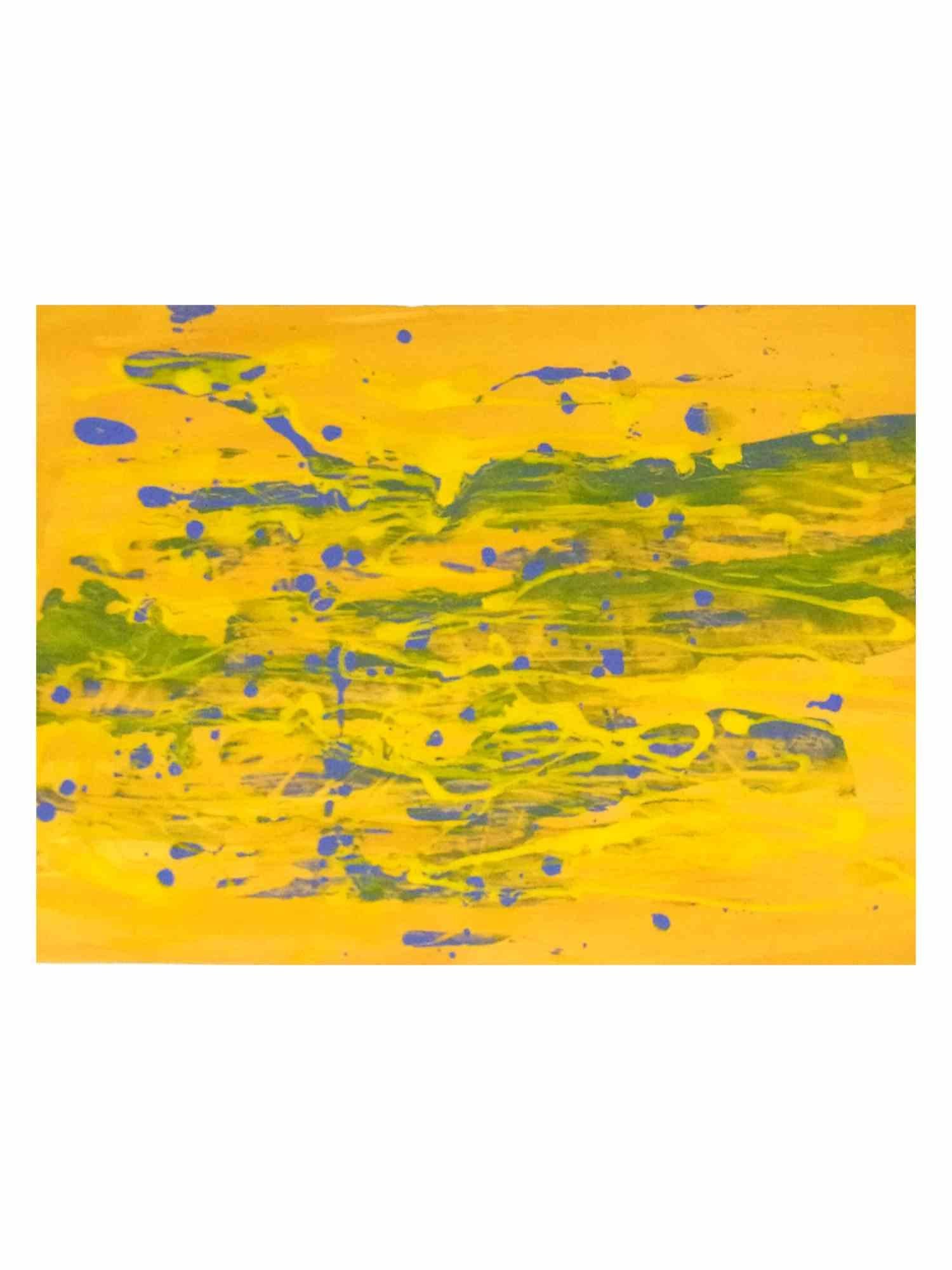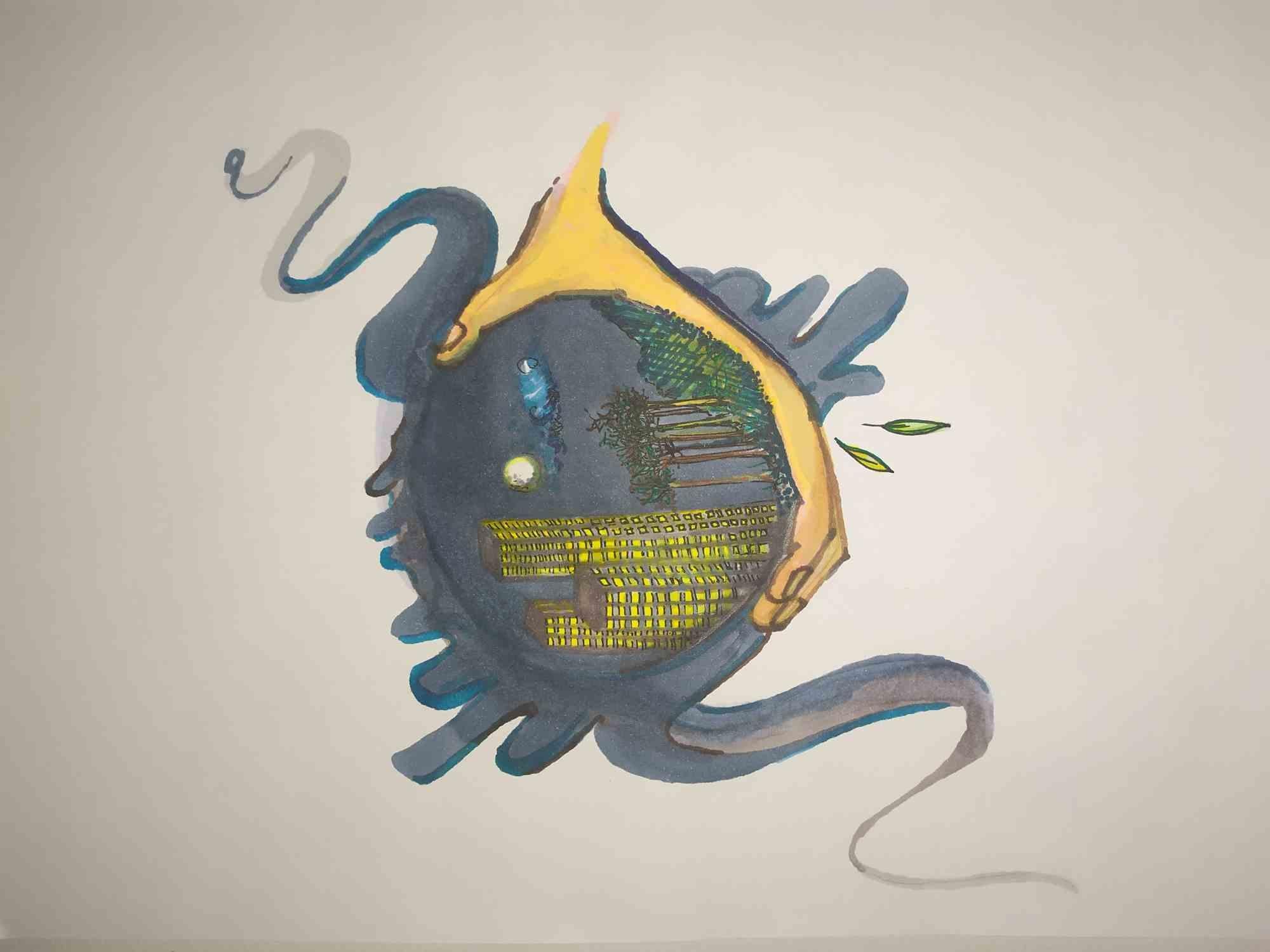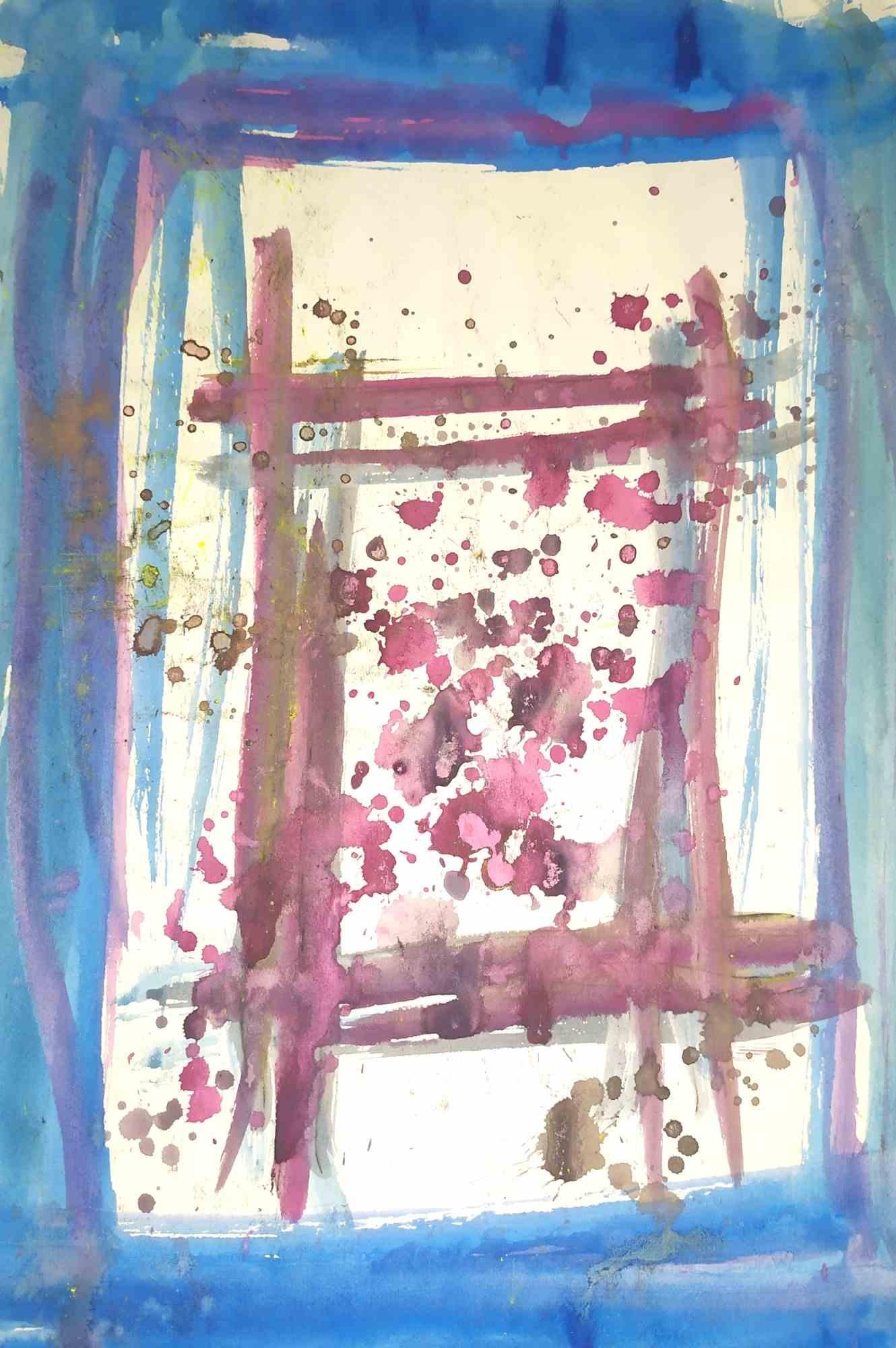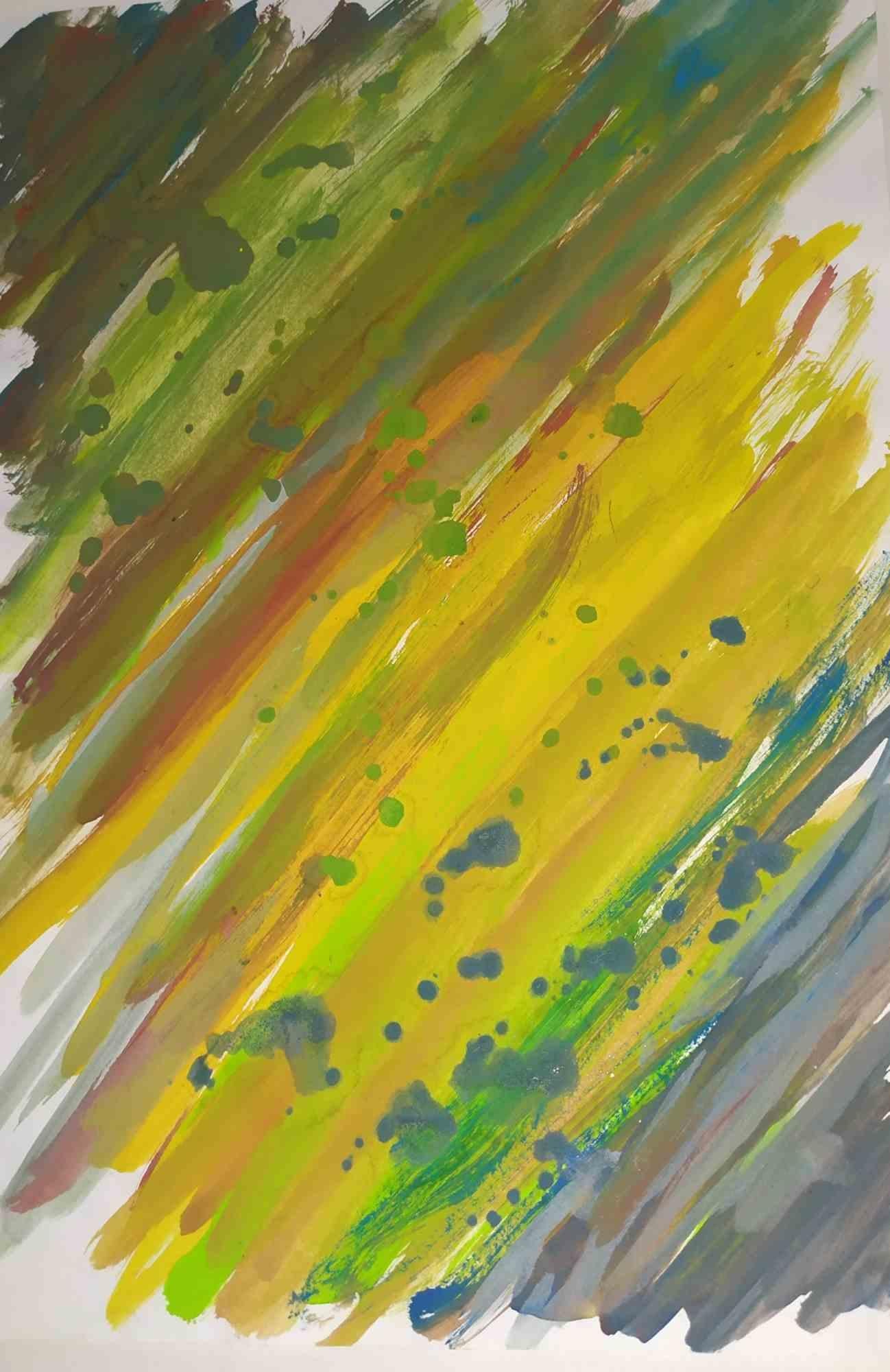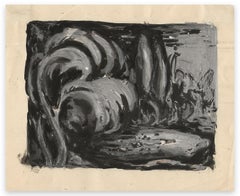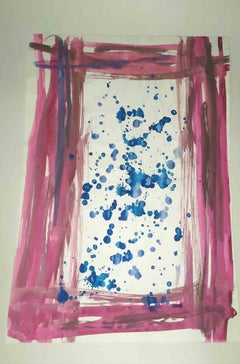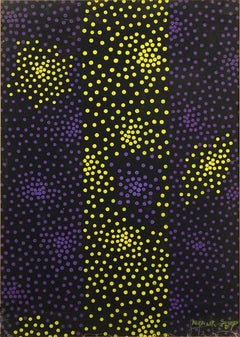
Blue Masquerade - Original Tempera on Paper by Maurice Rouzée - 1940s
View Similar Items
Want more images or videos?
Request additional images or videos from the seller
1 of 5
Maurice RouzéeBlue Masquerade - Original Tempera on Paper by Maurice Rouzée - 1940s1940s
1940s
About the Item
- Creator:
- Creation Year:1940s
- Dimensions:Height: 19.22 in (48.8 cm)Width: 25.12 in (63.8 cm)Depth: 0.04 in (1 mm)
- Medium:
- Movement & Style:
- Period:
- Framing:Framing Options Available
- Condition:
- Gallery Location:Roma, IT
- Reference Number:Seller: M-961251stDibs: LU65033378813
About the Seller
4.9
Platinum Seller
These expertly vetted sellers are 1stDibs' most experienced sellers and are rated highest by our customers.
1stDibs seller since 2017
6,721 sales on 1stDibs
Typical response time: 2 hours
More From This SellerView All
- Waves - Tempera and China Ink Drawing on Paper - Early 20th CenturyBy Marguerite Callet-CarcanoLocated in Roma, ITWaves is an original tempera and Cina ink drawing on paper, realized by Marguerite Callet-Carcano With pencil signature on lower right margin. In very good condition, except for a little missing of paper on lower left margin. Marguerite Callet-Carcano (Milan, 1878) Marguerite Callet-Carcano was an Italian-Belgian graphic artist, illustrated books like Drame and Savonarole. Drame by Iwan Gilkin (1926), Les Chimères by Georges Rency (1928), René by François-René Chateaubriand and a reprint by Adolphe by Benjamin Constant. In addition to the xilograph technique, she also used the linoleum one. She engraved the portrait of Charles De Coster...Category
Early 20th Century Modern Abstract Paintings
MaterialsInk, Tempera
- Stained Glazes - Tempera on paper - 2021By Contempologyc E.M.Located in Roma, ITTempera on paper realized by Compempologyc in 2021. Excellent condition.Category
2010s Modern Abstract Paintings
MaterialsTempera
- Wonder - Tempera on paper - 2021By Contempologyc E.M.Located in Roma, ITRealizzato da contempologyc a tempera su carta nel 2021 in Italia . Contempologyc artista poliedrica contemporanea amante dell'astrattismo ,sono svariati anni che percorre la sua car...Category
2010s Modern Abstract Paintings
MaterialsTempera
- Tempera - Tempera on Paper - 2018By Contempologyc E.M.Located in Roma, ITTempera on paper realized by Contempologyc in 2018. Excellent condition.Category
2010s Modern Abstract Paintings
MaterialsTempera
- Surreale - Tempera on Paper - 2018By Contempologyc E.M.Located in Roma, ITTempera on paper realized by Contempologyc in 2018. Excellent condition.Category
2010s Modern Abstract Paintings
MaterialsTempera
- Dissolvenze - Tempera on Paper - 2018By Contempologyc E.M.Located in Roma, ITTempera on paper realized by Contempologyc in 2018. Excellent condition.Category
2010s Modern Abstract Paintings
MaterialsTempera
You May Also Like
- Early Modern Colorful Red, Blue, Yellow, & Green Geometric Abstract Line DrawingLocated in Houston, TXAbstract geometric drawing by early Houston. TX artist Robert Preusser. The work features bursts of lines and colors that create movement throughout the composition. Signed and date...Category
1940s Modern Abstract Drawings and Watercolors
MaterialsPaper, Ink, Casein
- Secluded ValleyBy Ethel MagafanLocated in Lawrence, NYCasein on board. Ethel Magafan is known for her abstracted Western landscapes as well as, earlier in her career, the murals she created during the Great Depression for the Works Prog...Category
1950s Modern Landscape Paintings
MaterialsCasein
- Abstract Composition Tempera Painting Russian Soviet Avant Garde Ksenia EnderBy Ksenia EnderLocated in Surfside, FLDimensions: 25.5 X 20.5 Frame. Artwork measures 23.25 X 18.25 Ksenia Vladimirovna Ender ( Russian Ксения Владимировна Эндер , also Xenia Ender and Kseniia Ender. born 1895 in Sluzk , died 1955...Category
Early 20th Century Modern Abstract Paintings
MaterialsPaper, Tempera
- Ceremonial Dancers oil and tempera painting by Julio De DiegoBy Julio de DiegoLocated in Hudson, NYArtwork measures 48" x 30" and framed 56 ¼" x 38 ¼" x 3" Provenance: John Heller Gallery, NYC, circa 1975 (label verso) The artist's daughter Corbino Galleries, Sarasota, FL (1990)...Category
1940s Modern Abstract Paintings
MaterialsMasonite, Oil, Tempera
- St. Atomic oil and tempera painting by Julio de DiegoBy Julio de DiegoLocated in Hudson, NYJulio De Diego’s Atomic Series paintings made an extraordinary statement regarding the shock and fear that accompanied the dawn of the nuclear age. In the artist’s own words, “Scientists were working secretly to develop formidable powers taken from the mysterious depths of the earth - with the power to make the earth useless! Then, the EXPLOSION! . . . we entered the Atomic Age, and from there the neo-Atomic war begins. Explosions fell everywhere and man kept on fighting, discovering he could fight without flesh.” To execute these works, De Diego developed a technique of using tempera underpainting before applying layer upon layer of pigmented oil glazes. The result is paintings with surfaces which were described as “bonelike” in quality. The forms seem to float freely, creating a three-dimensional visual effect. In the 1954 book The Modern Renaissance in American Art, author Ralph Pearson summarizes the series as “a fantastic interpretation of a weighty theme. Perhaps it is well to let fantasy and irony appear to lighten the devastating impact. By inverse action, they may in fact increase its weight.” Exhibited 1950 University of Illinois at Urbana "Contemporary American Painting" 1964 Marion Koogler McNay Art Institute, San Antonio, Texas This work retains its original frame which measures 54" x 36" x 2". About this artist: Julio De Diego crafted a formidable persona within the artistic developments and political struggles of his time. The artist characterized his own work as “lyrical,” explaining, “through the years, the surrealists, the social-conscious painters and the others tried to adopt me, but I went my own way, good, bad or indifferent.” [1] His independence manifested early in life when de Diego left his parent’s home in Madrid, Spain, in adolescence following his father’s attempts to curtail his artistic aspirations. At the age of fifteen he held his first exhibition, set up within a gambling casino. He managed to acquire an apprenticeship in a studio producing scenery for Madrid’s operas, but moved from behind the curtains to the stage, trying his hand at acting and performing as an extra in the Ballet Russes’ Petrouchka with Nijinsky. He spent several years in the Spanish army, including a six-month stretch in the Rif War of 1920 in Northern Africa. His artistic career pushed ahead as he set off for Paris and became familiar with modernism’s forays into abstraction, surrealism, and cubism. The artist arrived in the U.S. in 1924 and settled in Chicago two years later. He established himself with a commission for the decoration of two chapels in St. Gregory’s Church. He also worked in fashion illustration, designed magazine covers and developed a popular laundry bag for the Hotel Sherman. De Diego began exhibiting through the Art Institute of Chicago in 1929, and participated in the annual Chicago Artists Exhibitions, Annual American Exhibitions, and International Water Color Exhibitions. He held a solo exhibition at the Art Institute of Chicago in the summer of 1935. Though the artist’s career was advancing, his family life had deteriorated. In 1932 his first marriage dissolved, and the couple’s young daughter Kiriki was sent to live with friend Paul Hoffman. De Diego continued to develop his artistic vocabulary with a growing interest in Mexican art. He traveled throughout the country acquainting himself with the works of muralists such as Carlos Merida, and also began a collection of small native artifacts...Category
1940s American Modern Abstract Paintings
MaterialsMasonite, Oil, Tempera
- The Magician oil and tempera painting by Julio de DiegoBy Julio de DiegoLocated in Hudson, NYJulio De Diego’s Atomic Series paintings made an extraordinary statement regarding the shock and fear that accompanied the dawn of the nuclear age. In the artist’s own words, “Scientists were working secretly to develop formidable powers taken from the mysterious depths of the earth - with the power to make the earth useless! Then, the EXPLOSION! . . . we entered the Atomic Age, and from there the neo-Atomic war begins. Explosions fell everywhere and man kept on fighting, discovering he could fight without flesh.” To execute these works, De Diego developed a technique of using tempera underpainting before applying layer upon layer of pigmented oil glazes. The result is paintings with surfaces which were described as “bonelike” in quality. The forms seem to float freely, creating a three-dimensional visual effect. In the 1954 book The Modern Renaissance in American Art, author Ralph Pearson summarizes the series as “a fantastic interpretation of a weighty theme. Perhaps it is well to let fantasy and irony appear to lighten the devastating impact. By inverse action, they may in fact increase its weight.” Exhibited 1964 Marion Koogler McNay Art Institute, San Antonio, Texas This work retains its original frame which measures 54" x 42" x 2" About this artist: Julio De Diego crafted a formidable persona within the artistic developments and political struggles of his time. The artist characterized his own work as “lyrical,” explaining, “through the years, the surrealists, the social-conscious painters and the others tried to adopt me, but I went my own way, good, bad or indifferent.” [1] His independence manifested early in life when de Diego left his parent’s home in Madrid, Spain, in adolescence following his father’s attempts to curtail his artistic aspirations. At the age of fifteen he held his first exhibition, set up within a gambling casino. He managed to acquire an apprenticeship in a studio producing scenery for Madrid’s operas, but moved from behind the curtains to the stage, trying his hand at acting and performing as an extra in the Ballet Russes’ Petrouchka with Nijinsky. He spent several years in the Spanish army, including a six-month stretch in the Rif War of 1920 in Northern Africa. His artistic career pushed ahead as he set off for Paris and became familiar with modernism’s forays into abstraction, surrealism, and cubism. The artist arrived in the U.S. in 1924 and settled in Chicago two years later. He established himself with a commission for the decoration of two chapels in St. Gregory’s Church. He also worked in fashion illustration, designed magazine covers and developed a popular laundry bag for the Hotel Sherman. De Diego began exhibiting through the Art Institute of Chicago in 1929, and participated in the annual Chicago Artists Exhibitions, Annual American Exhibitions, and International Water Color Exhibitions. He held a solo exhibition at the Art Institute of Chicago in the summer of 1935. Though the artist’s career was advancing, his family life had deteriorated. In 1932 his first marriage dissolved, and the couple’s young daughter Kiriki was sent to live with friend Paul Hoffman. De Diego continued to develop his artistic vocabulary with a growing interest in Mexican art. He traveled throughout the country acquainting himself with the works of muralists such as Carlos Merida, and also began a collection of small native artifacts...Category
1940s American Modern Abstract Paintings
MaterialsMasonite, Oil, Tempera
